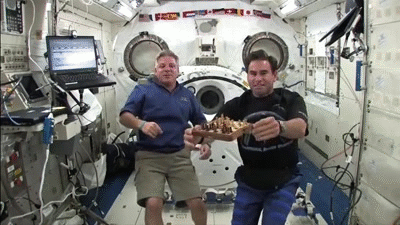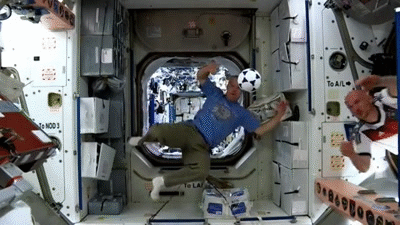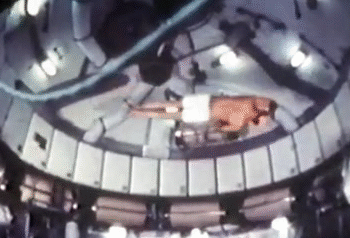Curate, connect, and discover
Superbowl - Blog Posts

I need that tree costume from Katy Perry's superbowl half time show...
mandatory super bowl post bc everyone around me is pumped so I want to spread the good vibes~~~
Can You Guess Which Football Signals Robonaut Is Doing?
Meet Robonaut, our humanoid robot (which means it’s built to look like a person). This makes it easier for Robonaut to do the same jobs as a person.

Robonaut could help with anything from working on the International Space Station to exploring other worlds…and now he might even take up a job as a referee!
We had Robonaut act out a few football signals. Can you guess what they are?!
Signal #1

Signal #2

Signal #3

Signal #4

Signal #5

Signal #6

Signal #7

Signal #8

Signal #9

Get the answers:

But it’s not all fun and games for Robonaut...from performing movements like a referee to helping astronauts on the space station, it’s important to have a robot that can perform the same tasks as humans. Why?

Robonaut could someday be tested outside the space station. This testing would determine how well Robonaut could work with, or instead of, spacewalking astronauts. Designers even have ideas for sending a robot like Robonaut to another world someday. If testing goes well, who knows where Robonaut - or a better robot based on Robonaut - could end up?

To learn more about connections between space and football, visit: https://www.nasa.gov/football
To learn more about Robonaut, visit: https://www.nasa.gov/robonaut2
Make sure to follow us on Tumblr for your regular dose of space: http://nasa.tumblr.com
10 Space & Football Facts You Probably Didn’t Know
There are more connections between space and football than you may have originally thought. Here are a few examples of how...
1. The International Space Station and a football field are basically the same size

Yes, that’s right! The International Space Station measures 357 feet end-to-end. That’s almost equivalent to the length of a football field including the end zones (360 feet).
2. It would take over 4,000 footballs to fill the Orion spacecraft

Our Orion spacecraft is being designed to carry astronauts to deep space destinations, like Mars! It will launch atop the most powerful rocket ever built, the Space Launch System rocket. If you were to fill the Orion spacecraft with footballs instead of crew members, you would fit a total of 4,625!
3. Our new Space Launch System rocket is taller than a football field is long

We’re building the most powerful rocket ever, the Space Launch System. At its full height it will stand 384 feet – 24 feet taller than a football field is long.
4. The crew living on space station will see the day begin and end…twice…during the Super Bowl

An average NFL game lasts more than three hours. Traveling at 17,500 mph, the crew on the space station will see two sunrises and two sunsets in that time…they see 16 sunrises and sunsets each day!
5. Playing football on Mars would be…lighter

On Mars, a football would weigh less than half a pound, while a 200-pund football player would weigh just about 75 pounds.
6. It would take over 3,000 hours for a football to reach the Moon

Talk about going long…if you threw a football to the Moon at 60 mph, the average speed of an NFL pass, it would take 3,982 hours, or 166 days, to get there. The quickest trip to the Moon was the New Horizons probe, which zipped pass the Moon in just 8 hours 35 minutes on its way to Pluto
7. The longest field goal kick in history would’ve been WAY easier to make on Mars

The longest field goal kick in NFL history is 64 yards. On Mars, at 1/3 the gravity of Earth, that same field goal, ignoring air resistance, could have been made from almost two football fields away (192 yards).
8. A quarterback would be able to throw even further on Mars

Aerodynamic drag doesn’t happen on Mars. With a very thin atmosphere and low gravity to drag the ball down, a quarterback could throw the football three times as far as he could on Earth. A receiver would have to be much further down the field to catch the throw
9. Football players and astronauts both need to exercise every day

Football players must be quick and powerful, honing the physical skills necessary for their unique positions. In space, maintaining physical fitness is a top priority, since astronauts will lose bone and muscle mass if they do not keep up their strength and conditioning.
10. Clear team communication is important on the football field AND in space

During football games, calling plays and relaying information from coaches on the sidelines or in the booth to players on the field is essential. Coaches communicate directly with quarterbacks and a defensive player between plays via radio frequencies. They must have a secure and reliable system that keeps their competitors from listening in and also keeps loud fan excitement from drowning out what can be heard. Likewise, reliable communication with astronauts in space and robotic spacecraft exploring far into the solar system is key to our mission success.
A radio and satellite communications network allows space station crew members to talk to the ground-based team at control centers, and for those centers to send commands to the orbital complex.
Make sure to follow us on Tumblr for your regular dose of space: http://nasa.tumblr.com
7 Sports Astronauts Love Without Gravity (Including Football)
Astronauts onboard the International Space Station spend most of their time doing science, exercising and maintaining the station. But they still have time to shoot hoops and toss around a football.
From chess to soccer, there’s a zero-gravity spin to everything.
1. Baseball



Baseball: America’s favorite pastime. JAXA astronaut, Satoshi Furukawa shows us how microgravity makes it possible to be a one-man team. It would be a lot harder to hit home runs if the players could jump that high to catch the ball.
2. Chess

Yes, it’s a sport, and one time NASA astronaut Greg Chamitoff (right) played Earth on a Velcro chess board. An elementary school chess team would pick moves that everyone could vote for online. The winning move would be Earth’s play, and then Chamitoff would respond. About every two days, a move would be made. But who won the historic Earth vs. Space match? Earth! Chamitoff resigned after Earth turned its pawn into a queen, but it was game well played.
3. Soccer


NASA astronaut Steve Swanson put a new spin on soccer by juggling the ball upside down. However, he might not have considered himself upside down. On the space station, up and down are relative.
4. Gymnastics

NASA astronauts usually sign off their videos with a zero-gravity somersault (either forwards or backwards). But astronauts are also proficient in handstands, flips and twists. The predecessor to the International Space Station, the Skylab, had the best space for the moves. The current space station is a bit tight in comparison.
5. Basketball

Objects that aren’t heavy don’t move very well on the space station. They kind of just float. It’s like Earth, but exaggerated. For example, on Earth a beach ball wouldn’t go as far as a basketball. The same is true in space, which is why playing with a basketball in space is more fun than playing with a beach ball.
6. Golf

People talk about hitting golf balls off skyscrapers, but what about off the International Space Station? While golf isn’t a normal occurrence on the station, it’s been there. One golf company even sent an experiment to the station to find out how to make better golf clubs.
7. Football

Zero gravity doesn’t make everything easier. Astronauts need to relearn how to throw things because their brains need to relearn how to interpret sensory information. A bowling ball on the space station no longer feels as heavy as a bowling ball on Earth. When astronauts first throw things on the space station, everything keeps going too high. That would put a wrench in your spiral for a couple of months. But once you adjust, the perfect spiral will just keep spiraling!
Make sure to follow us on Tumblr for your regular dose of space: http://nasa.tumblr.com